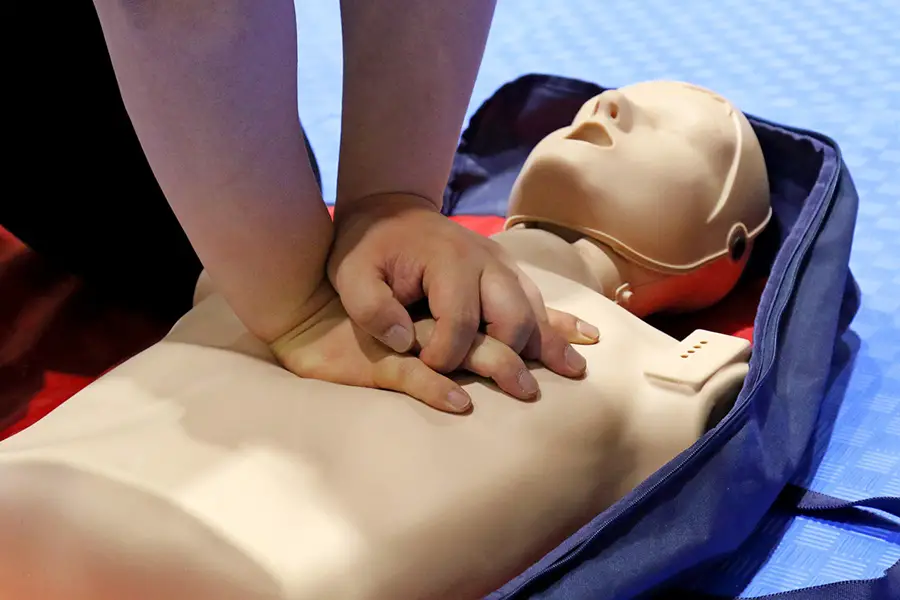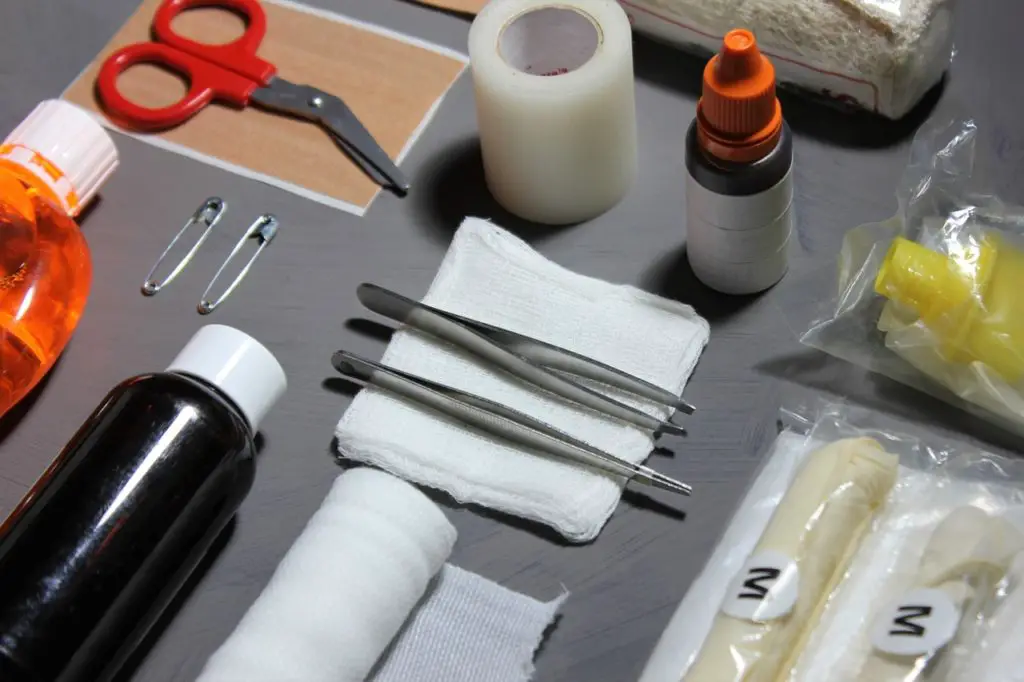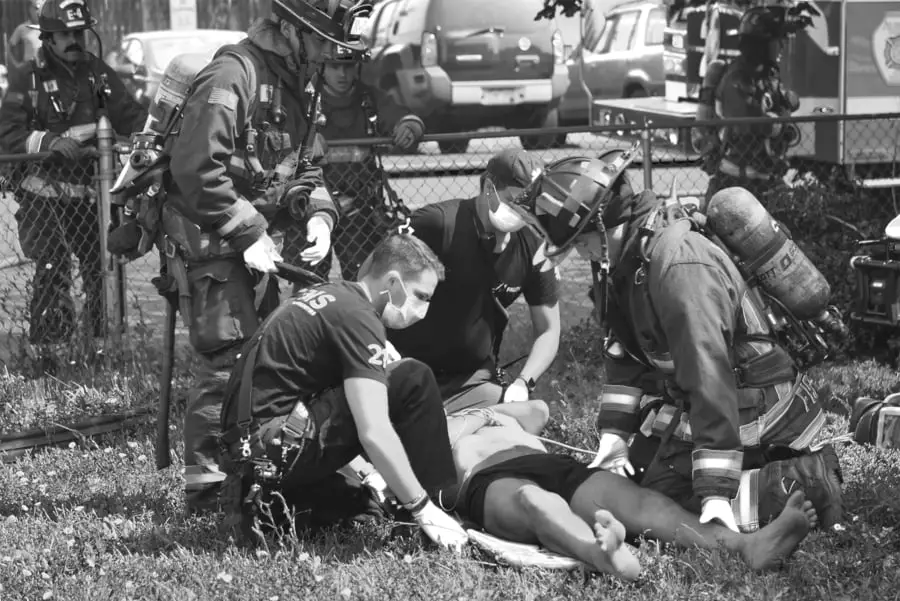If you are a healthcare professional you’ve likely come across BLS requirements for your schooling or for a job. If you’re part of the general public and have been researching first aid or CPR classes, you may have come across options for BLS classes. This article will answer what a BLS certification is and other common questions.
What is a BLS certification?
BLS is an acronym that stands for basic life support. Becoming BLS certified means that you have successfully completed a BLS class. This class is essentially an advanced CPR class that is geared towards health care professionals and people who assist in caring for others to expand upon their life-saving skills. The classes are a combination of classroom (which can either be online or in-person), a practical in-person assessment of skills, and a test. The best option is to find a class that is certified by the American Heart Association (AHA) or the American Red Cross or ensure that the class is approved by either organization. This approval may be required if the BLS certification is required by your employer.
You should know that a BLS class is not a first aid course. It teaches the essential life-saving skills to perform while waiting for professional help to arrive.
One other item to note is that the term BLS is often used more generically, especially outside of the United States, when referring to CPR training or general life-saving skills.
What does the BLS course consist of?
If you’ve taken a CPR class in the past you’ll have some idea of what to expect, although the BLS course expands on those topics. The class will include assessing an emergency situation, determining how to provide aid, and what to do until help arrives. The American Heart Association website describes the class material as:
- High-quality CPR for adults, children, and infants
- The AHA Chain of Survival, specifically the BLS components
- Important early use of an AED
- Effective ventilations using a barrier device
- Importance of teams in multirescuer resuscitation and performance as an effective team member during multirescuer CPR
- Relief of foreign-body airway obstruction (choking) for adults and infants
What’s the difference between CPR & BLS?
CPR and BLS classes cover much of the same material. The biggest difference between the two is who the intended audience is. CPR classes are designed and taught so that anyone, regardless of background, can fully understand and implement the concepts and techniques covered. Anyone from a teenage babysitter to a middle-aged businessman can benefit from taking a CPR class. BLS classes are geared toward healthcare professionals. Although much of the same material is covered, that material is explained in further detail and covers more of how to approach the emergency in a healthcare setting.
It’s important to know what your potential employer might be looking for if you are obtaining the certification for a job. Reach out to the employer or look at other similar job postings to see what that career is likely to require.
Who should become BLS certified?
BLS classes are designed for people who work in the healthcare field or other volunteers that would put themselves in a scenario that may involve a person requiring aid. It’s good for paramedics, nurses, emergency medical technicians, first responders, mental health professionals, dentists, etc., and is likely required by many of these jobs. Although BLS classes are open to anyone, if you are not in a medical profession, you may be better off taking a CPR class.
What does a BLS certification mean?
A BLS certificate signifies that the person has been trained in basic life support and has demonstrated a minimum level of competency in executing the skills taught in the BLS class.
How long does it take?
A typical in-person BLS class will take somewhere between 4 to 5 hours. If you are doing a hybrid class where the class material is given online and the practical assessment is in person it may take slightly less depending on your comprehension of the class material on your own. You will still be required to do an in-person assessment as well.
If you are renewing your BLS certification the classes and assessment will take about half the time – about 2 hours.
BLS certification cost
A BLS class and certification can vary in cost but generally is between $60 and $80. This cost includes the class, in-person assessment, and booklets or other learning material. There are some courses that cost as little as $50 and some private course providers that charge up to $100. Depending on where you work certification, costs may be reimbursable, so check with your employer.
Recertification for PLS will generally cost about the same, between $60 and $70.
Looking for a BLS course near you?
If you’re looking for a BLS class near you, the best place to look is on the AHA website. You can use their class finder and filter by class type, date, or location.
Or you can go through the Red Cross here.
How to check your BLS certificate status
If you are waiting for your BLS card (either as a paper copy in the mail or an e-card delivered by email) and it’s taking too long you should reach out to the organization that provided the class. Also, be sure to check to see if the e-card may have been delivered to your spam folder. If you’ve taken a class through the Red Cross, you can check your certification status here.
What to know about online BLS courses
There are lots of websites advertising online courses. Be careful: you can take this class online and may receive a certificate, but that doesn’t mean that it’s an AHA or Red Cross certified course. AHA and Red Cross both allow for online classes but still require an in-person skills assessment. This is referred to as a hybrid class. OSHA requires hands-on training as well as most jobs. If you’re getting BLS certified for a job, see what their requirements are before taking a class.
Should I take a free online BLS course?
There are websites out there that advertise free online BLS classes. These are most likely not AHA or Red Cross certified and do not include any form of in-person evaluation, which means they do not meet OSHA requirements. However, these classes may be useful for people who want to become better educated in first aid, want a refresher in between certifications, or want a preview of the material before the class.
How long does a BLS certificate last?
A BLS certification will last for 2 years. You have a 30-day grace period after the expiration date to get recertified. The re-certification process consists of taking a shorter review course and successfully completing the required tests.
BLS re-certification
As you approach your 2-year mark, you will need to become BLS re-certified. Many employers, especially at establishments like hospitals and nursing facilities, will cover the cost of taking a renewal class or may even provide classes in the facility. If not, you’ll be required to pay the class fee and take the abbreviated review course and required tests.
How do I know my BLS certification has expired?
Your BLS card will show an “issue date” and a “renew by” date. You will need to renew your BLS certification by the renew date or within the 30-day grace period afterward. If you fail to do so, you will have to take the full class and assessment over again.
Lost BLS card
If you’ve lost or destroyed your completion card, you’ll need to reach out to the training center which originally issued it. It will be their responsibility to replace it and they may charge a fee to do so.
If you received an ecard, hopefully, you saved it in your mailbox or can find the old version there. If not, you will need to reach out to your BLS training center or visit the AHA Ecard Search.
Have you taken a BLS course? Anything else we should know? Let us know what you thought about it below.




